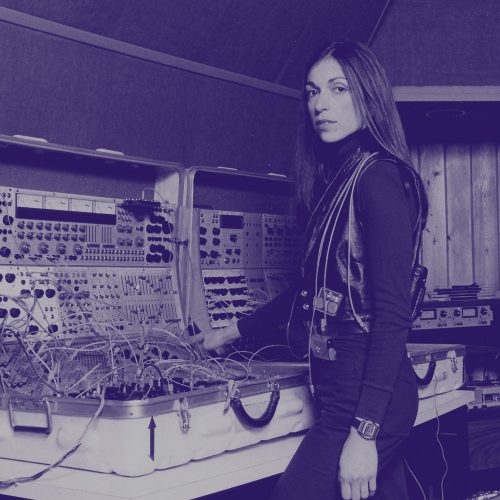

SUZANNE CIANI
EPISODE 24
Suzanne Ciani is an early pioneer of electronic music in the United States. She earned a master’s degree in composition at the University of California at Berkeley and collaborated with Stanford University’s John Chowning and Max Matthews, two of the founders of electronic music. In the early 1970s, she began working with synthesizer designer Don Buchla, and her knowledge and passion for the Buchla synthesizer led to a very successful career as a synthesizer player and commercial sound designer. Throughout the ’70s, her work led to the creation of iconic sounds for commercials and video games. This episode was broadcast live on Cashmere Radio and is hosted by Doron Sadja.
“Well I was primarily a composer, and the life of a composer is very restricted in a traditional sense because you’re reliant on other people performing your music. In those days, I saw the politics of new classical music and it was very discouraging. Being female, they said, ‘Oh, you have no right to conduct.’ And this and that. So when this concept of a self-controlled musical environment struck me, it was a godsend. It was like, ‘I can control it; it’s mine. And no one can tell me what to do.’ A natural euphoria happened.”
Suzanne Ciani
“The most important thing about it was not the sound. It was the way the sound could move. I found the frequency range of traditional instruments to be really subdued, with no low or high end. With electronics, you went the whole gambit. Other music sounded kind of muffled. As a composer for traditional instruments, you’re limited by things like how long someone can hold their breath or the fingerings or the ranges. With the Buchla, suddenly all these doors opened. You could trans-morph a sound, like you could turn a bass to a wind, fly it around the room and turn it upside down. The other fascination in academic music at the time was the idea of complexity. You had to be complex or you wouldn’t be worth your salt as a composer. But with the machine, complexity was easy. That whole concept went out the window, so I could return to simplicity. Because I was in love with this machine, I was very patient. People would ask me what it was, and nobody understood it. So I wanted to develop a technique for it the same way people have a technique for playing the violin. You know, Don Buchla viewed it as a performance instrument, and I believed him. So I wanted to perform it. And that was really challenging. “
Suzanne Ciani
“One reason I play the Buchla, as opposed to another instrument, is that it gives me a lot more fine control and feedback. I can make subtle changes and the instrument talks back to me. I find it very hard to play an instrument that doesn’t communicate back. I think that’s one thing that the Buchla excels in.”
Suzanne Ciani
“We love machines, because they do what we tell them to. However, this machine doesn’t. It is so unpredictable, it drives me mad. It is not consistent at all, so I never know what is going to happen. But I like that. I like being on the edge. You have to go with what’s there and what the machine gives you, but that’s also why playing the Buchla is exhausting. You have to keep thinking ahead on what to do next. For myself, I have to be very relaxed, as I constantly have to listen. I have some ideas about what I can do, but I can’t get stuck. I need to go with the flow of that moment, and see what I enjoy at that point. You always get to a point where it just sounds good, and then you stay there for a short while.”
Suzanne Ciani
“In my day I thought we would be where we are now, 30 years ago. I thought electronic music would be everyplace, built into furniture! I designed a sofa where eight people could sit in a circle and everybody could adjust their pitch.”
Suzanne Ciani
Sound Portraits is a series of lectures/listening sessions, curated by Doron Sadja, focusing on the work of iconic composers who have paved the way for contemporary electronic music. Started in 2015 as a live event at Spektrum in Berlin, the series quickly grew and exists now as both a live lecture series and a radio show on Cashmere Radio. After an introduction of each artist’s life and work, we listen to a selection of excerpts and complete works from the artist’s repertoire. Besides providing an opportunity to introduce these seminal artists to a new audience, the Sound Portraits series also offers an open forum to engage in group listening in a quiet atmosphere.
Doron Sadja is an American artist, composer, and curator whose work explores modes of perception and the experience of sound, light, and space. Find out more at www.doron.sadja.com
Check out our sister-site Dissolving Sounds.
Contact us at info@soundportraits.info